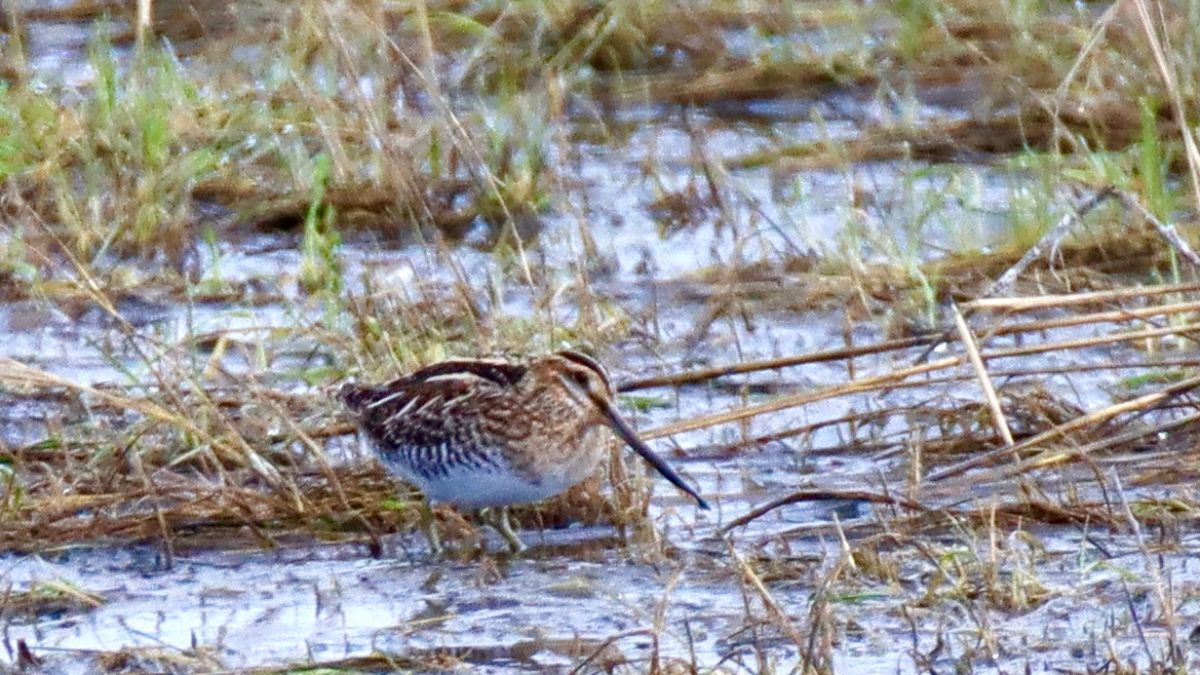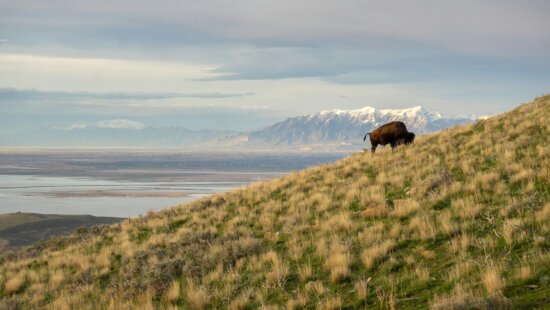Wildlife
Over 84,000 shorebirds counted during spring survey

A common snip foraging for food on the shore of the Bear River. Photo: Courtesy of Jennifer Wright // Utah Division of Wildlife Resources
UTAH – The Utah Department of Wildlife Resources (DWR), has restarted the statewide shorebird survey, which has been on hiatus for 30-years. This year, the DWR along with other wildlife focused organizations revived monitoring efforts to gather important data about migratory shorebirds throughout Utah.
Shorebirds include species such as plovers or sandpipers, and these birds are commonly found wading along shorelines and mudflats, foraging for small insects in the water. There are 42 different types of shorebirds that can be found in Utah during their migratory patterns, and many of these species can be found at the Great Salt Lake.
During the Spring survey, a total of 84,128 migratory shorebirds were counted at 69 specific sites at four different Utah waterbodies, including the Great Salt Lake, Utah Lake, Fish Springs National Wildlife Refuge and the Amalga Barrens Sanctuary. The survey was conducted by volunteers and biologists via airplane, vehicles, ATVs, boats and on foot. The Utah spring survey was conducted from April 24-28, and partnering agencies recently finished compiling the results.
“The historic bird surveys we are replicating occurred nearly 30 years ago, so these surveys fill a critical three-decade data gap in our understanding of migratory shorebird populations and their distribution,” said Max Malmquist, National Audubon Society engagement manager. “Most importantly, the results of these surveys will inform management and policy efforts to ensure there are resources to support birds and the places they need during their migratory journeys across the Intermountain West.”
Partners in the study include the DWR, Sageland Collaborative, the U.S. Fish and Wildlife Service, Tracy Aviary, National Audubon Society Utah Audubon Chapters, Point Blue Conservation Science, and other volunteers. Although a trial survey was conducted in Utah last fall, this most recent spring survey marked the beginning of the state’s formal data collection for shorebirds as part of a wider migratory shorebird census that is being conducted at about 200 sites across 11 western U.S. states.
“Over the course of five days, 115 participants surveyed for shorebirds across Utah,” said Sierra Hastings, Sageland Collaborative’s communications specialist and project coordinator. “Without the dedication of our outstanding volunteers, these efforts would not be possible. We’re so grateful for the expertise and passion that our volunteers bring to these surveys, and we’re excited to continue counting shorebirds with them in the fall.”
Some of the highlights of the spring survey included, seeing 23 different species of migratory shorebirds, counting 447 Snowy Plovers, which is a species of greatest conservation need, and seeing a few rare birds, including two Semipalmated Sandpipers, two Whimbrels and one Pectoral Sandpiper. The most commonly counted birds during the survey were American Avocets, followed by Wilson’s Phalaropes.
As the Great Salt Lake is the largest saline lake in the western hemisphere, the lake and it’s surrounding areas make up 75% of all Utah wetlands. The lake and the surrounding wetlands are critical to all types of birds, and roughly 330 species of birds have been documented at Great Salt Lake and its surrounding wetlands and uplands throughout the years.
“Great Salt Lake is an incredibly dynamic ecosystem, and shorebirds adjust how they use the lake as their habitats shift through time,” said John Neill, a Utah Division of Wildlife Resources Great Salt Lake Ecosystem Program wildlife biologist. “Thirty years ago, no phalaropes were observed spread out along the shoreline during fall migration, but last fall, over 80,000 phalaropes were counted. Phalaropes were present 30 years ago, but they were utilizing different habitats.”
In order to time this survey with the usual peak shorebird migration in the area, it will be carried out throughout the course of the next three years during the same week in both spring and fall. Despite the fact that the number of birds counted this spring was lower than anticipated, biologists think it is most probable because the lengthy winter postponed the birds’ spring migration in April, when the survey was done.




















